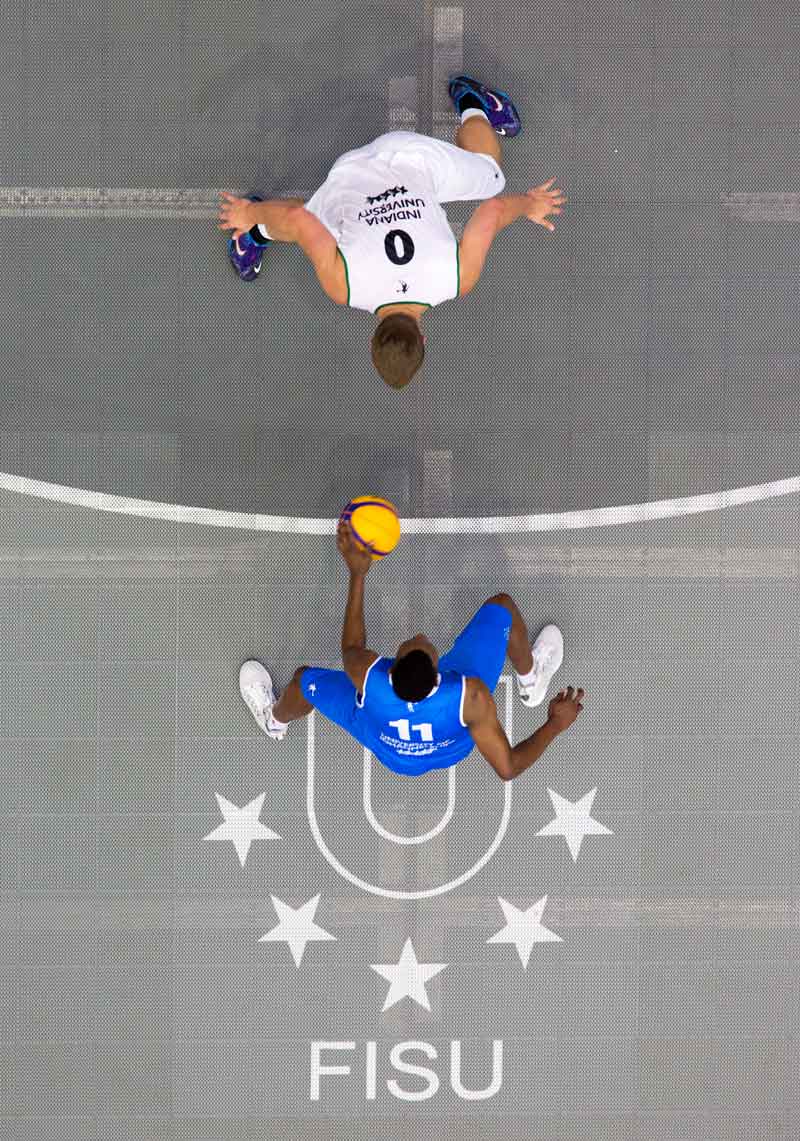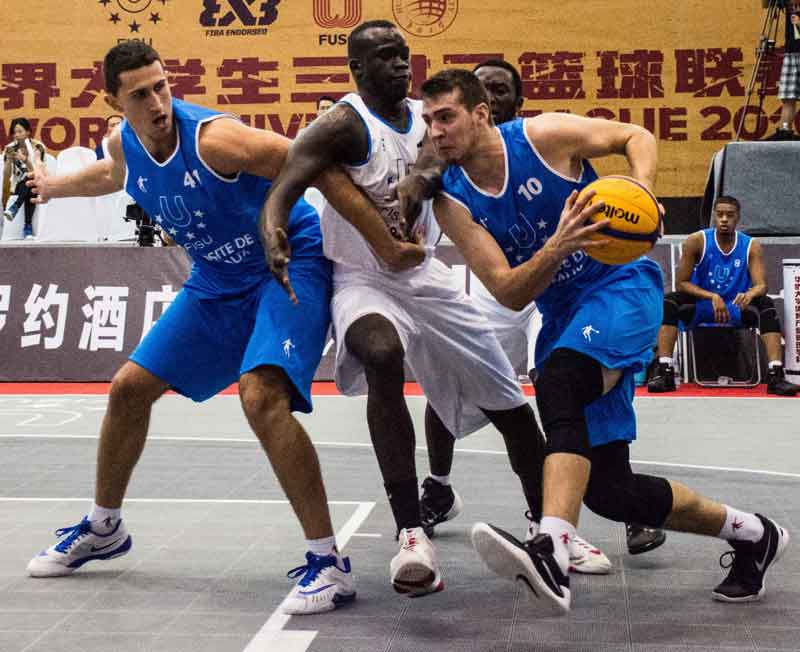For the third time in three years, FISU is bringing university sport to the campus with the 3×3 World University League. While action kicks off in September, now is the time to learn about the contenders for the crown.
 With the backing of FIBA and FISU other major players on the sports scene, 3×3 basketball is the largest team sport in the world
With the backing of FIBA and FISU other major players on the sports scene, 3×3 basketball is the largest team sport in the world
LAUSANNE, SWITZERLAND – This summer, all eyes will be on the 2017 Summer Universiade for what promises to be an exciting 12 days of high-energy, high-voltage and high-level competition in Chinese Taipei. Not long after, across the straight and on the mainland, the University Sports world’s attention will shift to the garden city on China’s southeast coast, Xiamen. In mid-September (14-17 to be exact), university 3×3 Basketball reaches its zenith with the 3×3 FISU World University League finals.
All told, 32 universities have earned the right to fight for the world titles men’s and women’s University 3×3 Basketball. With universities from more than 20 countries represented, the line-up of teams competing in this year’s looks like it’s an even higher level than the already excellent two previous editions.
Working as a joint venture between FISU, the Federation of University Sports of China (FUSC), and Huaqiao University as event organiser, the partnership is helping establish the 3.5 million inhabitant strong city of Xiamen and especially the Huaqiao campus as the centre of world university 3×3 Basketball.
 With an intense competition format and an intimate environment where fans and foes surround the court, 3×3 basketball brings out some of the best emotions of sport
With an intense competition format and an intimate environment where fans and foes surround the court, 3×3 basketball brings out some of the best emotions of sport
The inaugural international tournament in 2015 was an invitational event with 12 women’s and 12 men’s teams, representing 96 student-athletes from 11 different countries. Tianjin University of Finance and Economics (CHN) won the women’s tournament, beating Chinese Culture University (TPE)21-13 in the final.
Monash University (AUS) finished 3rd after defeating Peking University (CHN) 13-6 in the Bronze medal game. In the men’s brackets, UQAM (CAN) beat Université Bordeaux (FRA) 17-16 to win the Gold medal. The bronze went to Peking University (CHN) by beating Northumbria (GBR) 14-12.
The 2016 edition of The League brought the introduction of continental qualifying tournaments for the first time. The four continental events saw 322 players from 82 university teams representing 35 different countries compete to qualify to the League final; events in Johannesburg (RSA), Gold Coast (AUS), Macau (MAC) and Rijeka (CRO) were setup and delivered under the auspices of the respective FISU continental associations.
 Setting a strong screen for a pick-and-roll partner plays a prominent role for many game winning shots
Setting a strong screen for a pick-and-roll partner plays a prominent role for many game winning shots
In the 2016 final, the women’s team from Lithuanian Sport University (LTU) defeated University of Regina (CAN) 21-14 to earn the League champs crown. The Chinese Cultural University (TPE) defeated University Sydney (AUS) 16-15 in the bronze medal contest. In the men’s tournament, McGill University (CAN) defeated Université Bordeaux (FRA) 17-9 for the title. An all-European game made of the bronze medal contest, with the University of Kragujevac (SRB) defeating the University of Split (CRO) 21-13.
In the next Road to Xiamen 2017, we will start profiling this year’s League finalists. We will bring you the inside scoop on everyone from the defending champs and likely contenders to strong upstarts and the contest’s dark horses. Stay tuned.
 With all the sports out there, why did FISU decide to launch the League with 3×3? That’s easy: its where culture, sport and innovation collide.
With all the sports out there, why did FISU decide to launch the League with 3×3? That’s easy: its where culture, sport and innovation collide.


